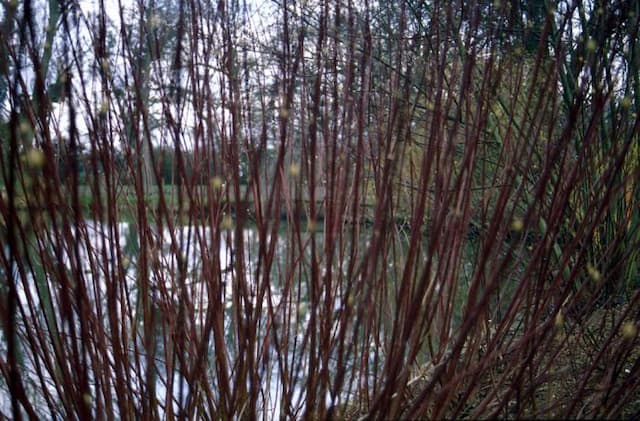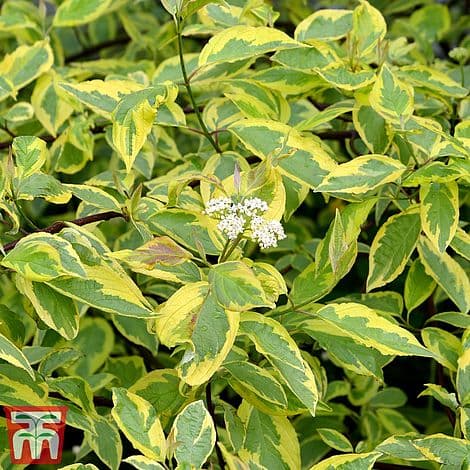Bunchberry Cornus canadensis

ABOUT
The plant commonly known as Bunchberry is a perennial which bears a distinct resemblance to the larger dogwood trees, even though it is low-growing. It features a whorl of six green leaves which grow outward in a star-like pattern from its central stem. During the flowering season, Bunchberry produces a set of small, clustered white flowers at the center of this whorl. Each flower cluster is actually a group of tiny, inconspicuous blooms surrounded by four large, petal-like bracts that can make the flowering head look like a single, large white bloom. After flowering, it produces clusters of bright red berries that are quite appealing to various forms of wildlife, as well as being a striking visual feature. The foliage can turn a beautiful reddish-purple color in the fall, adding to its seasonal interest.
About this plant
 Names
NamesFamily
Cornaceae.
Synonyms
Bunchberry, Canadian Dwarf Cornel, Crackerberry, Creeping Dogwood, Bunchberry Dogwood, Quatre-Temps, Dwarf Cornel, Pudding Berry.
Common names
Chamaepericlymenum canadense, Cornella canadensis, Cornus canadensis var. intermedia, Cornus canadensis var. longipedicellata, Cornus herbacea, Cornus unalaschkensis, Swida canadensis.
 Toxicity
ToxicityTo humans
Cornus canadensis, commonly known as Bunchberry, is not typically considered toxic to humans. However, like many plants, it could potentially cause mild stomach upset if ingested in large quantities due to the presence of compounds that can be irritating to the digestive system. There are no well-documented cases of poisoning by Bunchberry in humans, and it is generally considered safe to touch and to be around this plant.
To pets
Bunchberry is also not commonly known to be toxic to pets. It does not appear on the list of plants that are poisonous to dogs, cats, or other domestic animals provided by major animal protection organizations such as the ASPCA. If a pet were to ingest a large amount of Bunchberry, the worst you could expect might be some mild gastrointestinal discomfort, such as nausea or diarrhea. It is always prudent to monitor your pet and consult a veterinarian if they show signs of illness after eating any plant material.
 Characteristics
CharacteristicsLife cycle
Perennials
Foliage type
Deciduous
Color of leaves
Green
Flower color
White
Height
6 inches (15 cm)
Spread
1 foot (30 cm)
Plant type
Shrub
Hardiness zones
2
Native area
North America
Benefits
 General Benefits
General Benefits- Aesthetic Appeal: Cornus canadensis, commonly known as Bunchberry, adds visual interest to gardens, particularly in shaded woodland areas, with its bright green foliage and distinctive, small white flowers.
- Native Plant Advantages: As a North American native plant, Bunchberry is well-adapted to local climates and ecosystems, supporting regional biodiversity.
- Ground Cover: Its low-growing, spreading habit makes it excellent for ground cover, reducing soil erosion and suppressing weeds.
- Wildlife Habitat: Bunchberry provides habitat and food for a variety of wildlife, including birds and pollinators like bees, which are attracted to its flowers.
- Seasonal Interest: The plant has seasonal interest, with flowers blooming in spring, red berries appearing in summer, and foliage turning reddish-purple in the fall.
- Low Maintenance: Once established, Bunchberry requires minimal care, making it a hassle-free addition for gardeners seeking low-maintenance plants.
- Tolerant of Cool Climates: Bunchberry is tolerant of cooler climates and can thrive in areas where other plants might struggle, making it suitable for northern gardens.
- Non-Invasive: Unlike some ground covers, Bunchberry is non-invasive and tends to spread slowly, ensuring it is easier to manage and control in a garden setting.
 Medical Properties
Medical Properties- Antipyretic: Cornus canadensis has been used traditionally to reduce fevers.
- Antiseptic: It has properties that are believed to help in cleaning wounds and preventing infections.
- Astringent: The plant is used to tighten and tone tissues, reducing discharge and bleeding.
- Diuretic: Cornus canadensis may promote the excretion of urine, aiding in the removal of excess water and toxins from the body.
- Vitamin C source: The berries of Cornus canadensis are known to contain vitamin C.
 Air-purifying Qualities
Air-purifying QualitiesThis plant is not specifically known for air purifying qualities.
 Other Uses
Other Uses- Cornus canadensis, also known as Bunchberry, has been utilized as an indicator species in forestry to signal well-aerated and rich soils, which helps foresters in managing forest ecosystems effectively.
- In traditional practices, the leaves of Bunchberry were sometimes used as a substitute for tea, offering a unique flavor to hot beverages.
- The distinctive red berries of Bunchberry have been employed as a natural dye, providing a range of pink to red hues for fabric and traditional craft projects.
- Due to its low-growing and spreading habit, Bunchberry serves as an excellent ground cover in gardens, which assists in reducing soil erosion and suppressing weed growth.
- Bunchberry's fruit is edible to wildlife, playing a significant role in the diet of birds and small mammals, thus supporting biodiversity and ecological balance.
- The plant is sometimes incorporated into floral arrangements, specially in the autumn season, for its colorful foliage and attractive red berries.
- In addition to aesthetic uses, Bunchberry's dense growth can be advantageous for maintaining soil moisture levels in landscaped areas.
- The structure and stature of Bunchberry reflect light differently than taller plants, providing a unique visual texture to shade gardens where it can thrive.
- Gardeners may employ Bunchberry as a living mulch, as its mat-forming quality can keep the soil cool and moist, which is especially beneficial during hot summer months.
- Some photographers and artists draw inspiration from the Bunchberry's beauty, using it in their works to capture the essence of a North American forest floor.
Interesting Facts
 Feng Shui
Feng ShuiThe plant Canadian Dwarf Cornel is not used in Feng Shui practice.
 Zodiac Sign Compitability
Zodiac Sign CompitabilityThe plant Canadian Dwarf Cornel is not used in astrology practice.
 Plant Symbolism
Plant Symbolism- Stability and Hope: Cornus canadensis, commonly known as Bunchberry, often symbolizes stability and hope due to its enduring nature and the way it thrives in various conditions.
- Protection: Bunchberry is thought to symbolize protection as many cultures have believed in the plant's ability to ward off evil spirits and misfortune.
- Endurance: Because of its hardiness and its ability to withstand cold climates, Bunchberry is associated with endurance and the ability to overcome challenges.
 Water
WaterBunchberry, or Cornus canadensis, requires consistent moisture, so it should be watered deeply once a week with about one to two inches of water. During the growing season, especially if the weather is dry, check the soil moisture regularly and ensure that the soil does not dry out completely. It's best to water in the early mornings or evenings to reduce evaporation. During winter, reduce watering frequency as the plant's growth slows down and it requires less moisture. Use a watering can or a slow-drip system to avoid overwatering and to make sure the water penetrates deeply into the soil.
 Light
LightBunchberry thrives best in dappled sunlight or partial shade. It should be planted in a spot that mimics its natural woodland habitat, where it can receive filtered light through taller trees or structures. It can tolerate some morning sun but should be shielded from the intense afternoon sun to prevent leaf scorch.
 Temperature
TemperatureBunchberry prefers cooler climates and does well in temperatures ranging from 60°F to 70°F. It can survive minimum temperatures down to about -40°F but will go dormant. Avoid exposing the Bunchberry to extreme heat, as temperatures consistently above 75°F may stress the plant and inhibit its growth.
 Pruning
PruningBunchberry generally does not require extensive pruning, but it can be beneficial to prune to remove any damaged or diseased stems to keep the plant healthy. Pruning should be done in early spring before the new growth starts. It's also a good idea to remove any old or spent flowers after they have finished blooming to encourage more blooms.
 Cleaning
CleaningAs needed
 Soil
SoilBunchberry thrives in acidic soil with a pH of 4.5-6.0. A mix of peat moss, sand, and pine bark suits this plant well, mimicking its natural forest floor habitat.
 Repotting
RepottingBunchberry does not typically require repotting as it is generally grown in the garden rather than in containers.
 Humidity & Misting
Humidity & MistingBunchberry prefers moderate to high humidity levels, similar to those found in its native forest habitats.
 Suitable locations
Suitable locationsIndoor
Ensure acidic soil, shade, and high humidity for Bunchberry indoors.
Outdoor
Plant Bunchberry in acidic soil with shade and moisture.
Hardiness zone
2-7 USDA
 Life cycle
Life cycleCornus canadensis, commonly known as Bunchberry, begins its life cycle as a seed which germinates in late spring or early summer. The seedling stage includes development of a rudimentary root system and a shoot with a whorl of leaves that photosynthesize to support further growth. As it matures, Bunchberry forms an underground rhizome, from which new shoots emerge annually; during this vegetative stage, the plant spreads laterally in ideal conditions. The reproductive stage follows, usually in late spring to early summer, when Bunchberry produces small, greenish-white flowers surrounded by four large, petal-like bracts that are often mistaken for the actual flowers. After pollination by insects, these flowers give way to a cluster of bright red berries, each containing seeds that disperse to continue the cycle primarily through animal endozoochory. In winter, Bunchberry becomes dormant, conserving energy until the return of favorable growing conditions.
 Propogation
PropogationPropogation time
Spring-Early Summer
The most popular method of propagation for Bunchberry (Cornus canadensis) is by seed. To propagate Bunchberry seeds, they should be sown fresh in the fall directly into a cold frame or outdoor seedbed. The seeds require a period of warm stratification followed by cold stratification to break dormancy, mimicking the natural seasonal changes. This can be done artificially by keeping the seeds at around 70°F (21°C) for 60-90 days, followed by 30°F to 40°F (-1°C to 4°C) for an additional 60-90 days. Once stratified, the seeds can then be sown in soil, ideally in a shaded area. Seedlings usually emerge in the spring and can be transplanted to their permanent location the following fall or the second spring after sowing.









